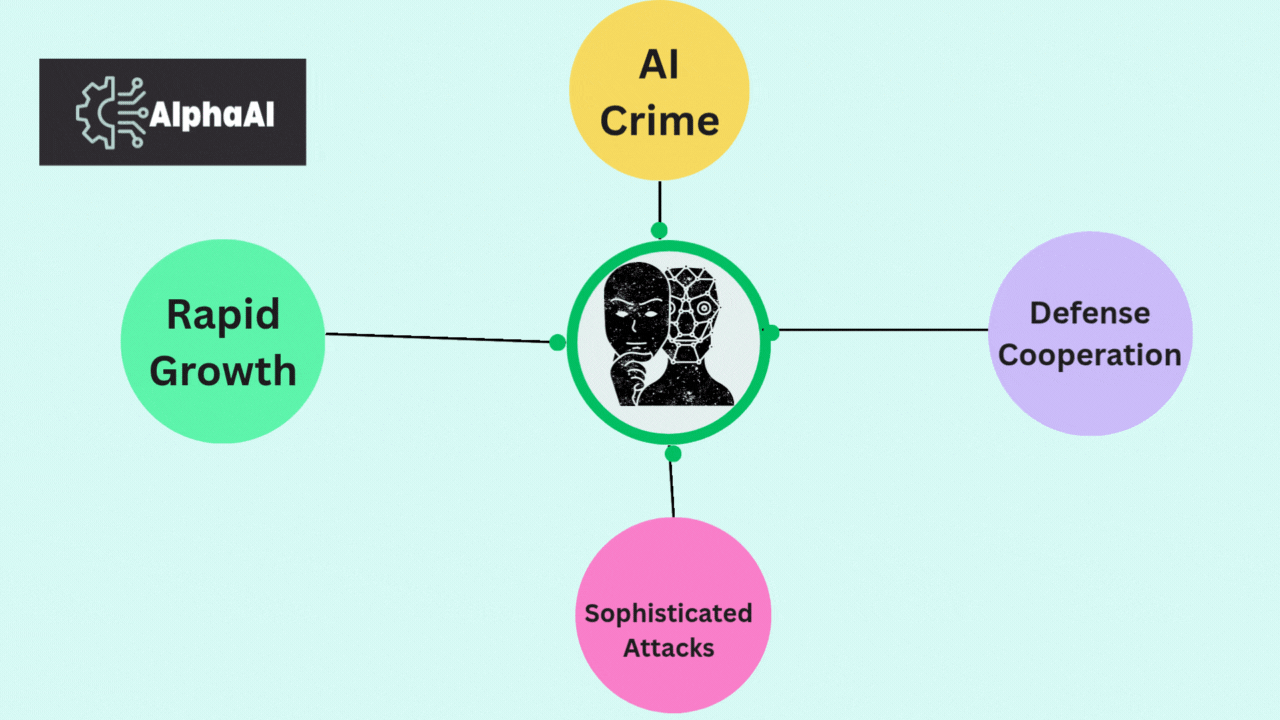According to Gartner, the improper use of generative AI (GenAI) across borders will cause more than 40% of AI-related data breaches by 2027. Experts warn that the frequency and sophistication of criminal activity are rising significantly due to criminals' quick adoption of AI tools to automate scams, produce convincing deepfakes, and perform extensive cyberattacks.
Artificial intelligence is neither artificial nor intelligent," stated Dr. Kate Crawford, an established AI researcher and Senior Principal Researcher at Microsoft. It has genuine effects, was generated by real people, and grows from natural resources. This quotation highlights how AI impacts security, trust, and society in the real world, moving beyond innovation. The consequences are significant and worthwhile when considering AI-enabled crime.
The rise of AI-enabled crime has transformed how criminals operate, allowing them to act faster and more efficiently while removing many outdated challenges. For instance, phishing campaigns driven by AI can now be developed to target numerous victims at once, increasing their success rate by up to 50%. As a result of this growing threat, governments, corporations, and individuals are all under pressure to develop new defenses against increasingly sophisticated attacks. According to Forbes contributor Frank McKenna, the number of criminals using AI for fraud has increased by 644% in the last year, highlighting the quick rate at which AI fraud has spread worldwide.
With the development of AI technology, criminals can more easily deceive victims by integrating phishing, creating realistic fake videos and voices, and creating synthetic identities. In addition to endangering personal safety and financial systems, this rise in AI-powered crime also reduces global confidence in digital institutions and communications. More advanced technology, new regulations, and increased public awareness are all necessary to solve this issue. Society can better identify, stop, and react to these changing threats before they cause significant damage by creating AI-driven defenses to encourage cooperation between law enforcement, private businesses, and politicians.

From Automation to Smart AI Crimes
From simple automation to highly autonomous operations, AI-enabled crime has advanced quickly. Criminals initially utilized AI tools, like phishing message transformation and vulnerability scanning, to support human-led attacks. However, with minimal human involvement, today's AI agents can autonomously detect vulnerabilities, initiate attacks, and monitor complex criminal workflows. This development enables cybercriminals to operate 24/7 at a speed and scale that was previously inconceivable.
For instance, ransomware businesses that previously relied heavily on human operators increasingly use AI-driven automation, which promotes attack efficiency by more than 60%. This evolution radically alters the environment for threats, making attacks more frequent, faster, and more challenging to detect. Defenders may remain in front of autonomous AI threats due to Auxin AI's scalable, multi-model integration and semantic search, which speeds up the development of intelligent detection systems.
Top AI Crime Methods and Effects
AI has been employed as a weapon in several significant ways that increase criminal potential. AI is now being used in hyper-targeted phishing campaigns to create personalized messages that use victim-specific information and regional language characteristics that increase success rates by up to 50%. Because deepfake technology is now more widely available, criminals can effectively pose as family members or management. In 2024 alone, the US Treasury reported a 35% increase in deepfake media criminal activity. Further, AI tools can find zero-day vulnerabilities in large code bases in hours, speeding up the development of utilities and raising the possibility of cyberattacks.
Nearly 20% of financial crime losses 2024 were due to synthetic identity fraud driven by AI-generated fake profiles. This highlights how AI automates the creation of fake accounts and money laundering. Secure vector storage and Auxin AI's GenAI Firewall shield essential information and AI models from neglect, assisting organizations in recognizing and avoiding such complicated AI-driven threats. AI-powered scams increasingly utilize social media platforms to target victims globally; fake profiles and AI-generated content help scams appear more credible and grow.

Threats to Infrastructure and Security
AI-enabled crime threatens national security, essential infrastructure, and financial fraud. Autonomous AI agents could accurately and quickly target critical infrastructure like water treatment facilities and electrical grids. According to the US Department of Homeland Security, attacks using AI on this type of infrastructure may rise 25% over the next two years, potentially causing significant disruption. Additionally, nation-state actors are developing their AI skills.
For instance, North Korea's cyber operations, which have stolen nearly $3 billion in the last five years, are expected to become increasingly automated, making it more challenging to stop cyber-espionage and illegal financing. These occurrences indicate the pressing need for international cooperation and stronger defenses. The access control and real-time behavioral analysis capabilities of Auxin AI offer essential protection for infrastructure systems, ensuring that AI-driven attacks can be quickly identified and mitigated.
Let’s Fight AI Crime Together
A comprehensive approach must be adopted to combat AI-enabled crime. Advanced AI-powered detection systems depend on real-time detection of deepfakes, suspicious transactions, and blockchain irregularities. Regulatory frameworks must balance innovation and security to promote responsible AI use and discourage misuse. Campaigns for public education contribute to decreasing assault by increasing awareness of exaggerated information and scams powered by AI. Finally, cooperation between law enforcement, businesses, and governments is crucial.
Initiatives such as TRM Labs’ T3 Financial Crime Unit have demonstrated the success of coordinated efforts, assisting in capturing over $100 million in criminal funds. Society can strengthen its defenses against the increasing threat of AI-enabled crime by integrating technology, policy, education, and collaboration. Auxin AI’s low-code platform and token exchange optimize AI development costs and accelerate deployment, enabling faster, more effective responses to AI-driven criminal threats worldwide.
Let’s Stay Ahead of AI Crime
AI-enabled crime losses might exceed $8 billion annually by 2027, highlighting the urgent need for smarter defenses. AI-supported attacks are rising by 40% annually, requiring businesses to implement advanced safety protocols. To remain ahead of criminals and protect our digital future, proactive collaboration and constant advancement will be significant as AI technology grows. Together, we may develop a more resilient and secure digital environment by utilizing the latest technologies and collective expertise. By offering safe, low-code AI platforms to speed up development and defend against changing threats, Auxin AI helps in this conflict.

